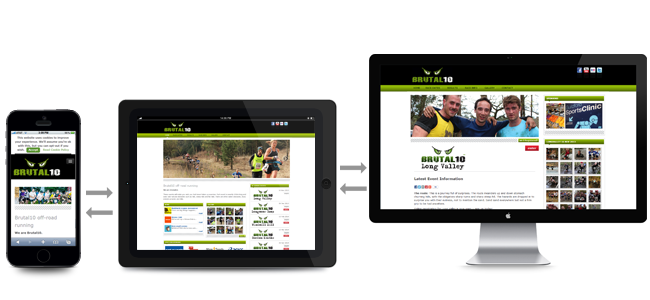Sharing helpful content marketing, search engine marketing and/or social media marketing tips, as well as information about the latest digital marketing trends, these 15 marketing pros are worth following.
There is no shortage of marketing advice, or marketers, on social media. Indeed, it often seems that on Twitter everyone is a marketing expert (or has something they want to market or sell). So who can you turn to, or follow, on Twitter (and elsewhere) for trustworthy online marketing advice that can help you better market your business? Check out these 15 marketing experts (listed in alphabetical order).
1. Danny Brown, author/blogger. “Danny is a digital veteran and isn’t afraid to change with the times,” states Amy Vernon, cofounder & CMO, Predictable.ly. “His blog is chock-filled with great posts that cover important topics with a no-nonsense attitude. Danny’s never rude, but also doesn’t take any guff,” she adds. “He responds to everyone and really thinks things through before writing or responding. I never stop learning from this man.”
2. Jeff Bullas, blogger, author, strategist and speaker. Why is he a marketer to follow? “His blogs on social marketing and advertising provide a wealth of information,” says Robert Hake, founder, MyLocker.net, a provider of custom t-shirts. “There are so many success stories throughout his articles that give business owners like me a clear understanding of best campaign tactics,” he explains. “Whenever I read one of his articles, I have at least ten different ideas that I’m excited to share with my team in the office the next morning.”
3. Brian Clark, founder, Copyblogger. “Every online marketer should follow Copyblogger founder Brian Clark,” says Tracy Mallette, founder, Content Newsroom. “He not only practices what he preaches by creating and sharing a ton of free digital marketing content, he also builds the tools that help you succeed in online marketing,” she explains. “He teaches you how to do digital marketing right through free blog posts, in-depth ebooks and podcasts, as well as more in-depth paid means, such as online content marketing certification training.”
4. Contently. “My absolutely favorite marketing pro would have to be Contently, a company dedicated to sharing the best and most creative approaches to content creation for brands,” says Vanessa Labi, a digital engagement specialist at Creative California, a digital marketing firm. “Their main focus, regardless of medium, is storytelling. The articles they publish on this subject matter are consistently written in a conversational, yet authoritative tone, and are presented on social media with engaging visuals and can’t-not-click-on-it headlines,” she explains. “In other words, they practice what they preach! I would recommend to digital marketing pros that they follow Contently to not only get the latest marketing news, but also to stay focused on elevating content and engaging your audience with excellent storytelling.”
5. Andy Crestodina, Web strategist and cofounder, Orbit Media Studios. “Andy has a knack for simplifying complex content marketing, Web analytics and marketing technology topics and sharing them in an easy-to-understand and actionable manner,” says Steve Susina, marketing director, LyonsCG, an ecommerce digital agency. In addition to sharing “his own content, he curates and shares great ideas from others across the marketing ecosystem. And he regularly engages with others on social media.”
6. Rand Fishkin, founder, Moz. “Rand Fishkin has been a thought leader in the SEO world for a number of years and whilst no longer CEO of Moz, he is still very active in the search marketing community,” explains Simon Ensor, managing director, Yellowball, a digital marketing agency. “Thankfully, he is also forthcoming with advice and latest news as well as being particularly active on social media. This in turn makes him an incredibly useful source of contemporary information on all things SEO.”
“The reason I like following Rand is because he gives, or directs people to, great insights that are easy to digest and understand for the everyday marketer or business owner,” says Patrick Delehanty, a digital marketing specialist with Marcel Digital. “He’s [very good at responding to] questions or comments on Twitter and also is fantastic at engaging in honest dialogue about business and marketing issues or news. The content he puts out on Moz and his presentations are great for anyone that is either just starting in digital marketing, or a seasoned veteran.”
7. Ahna Hendrix, CEO & lead social media specialist, ARCH Digital Agency. “I believe good content and value are the premier services you can offer on a social media platform, and Ahna does it well and with flair,” says Dan Sotridge, a motivational speaker, writer and life coach. “Her bubbly personality shines through in everything she posts, and gives the follower a reason to ‘buy in’ to what she is talking about. I am always looking for new ways to use social media to drive my business, [and] Ahna takes the work out of business-related social media and makes it fun!”
8. Kevan Lee, content crafter, Buffer. “Kevin shares the best writing tactics for blogging and social media – and has a [helpful] newsletter,” says Jeff Lizik, director of Digital Marketing, C-leveled. “If you follow Kevin, you’ll learn [about] the best tools out there that save you the most time.” For example, “he recently posted about the science and research behind hashtags. It answers questions like, ‘Should we be using them and how many should we use in one post?’”
9. MarketingProfs, “MarketingProfs provides great tips on content ideas, writing and creation,” says Katie Bisson, marketing & public relations manager, Technology Seed, a managed IT services company. “Along with providing tips in blog or article format, they host an abundance of webinars all geared toward content creation. This is, by far, my favorite site to turn to.”
10. Katie Martell, CMO, Cintell. Why is Martell a “must follow”? “This Boston-based marketer-turned-entrepreneur has created buzz, built brands and driven growth at B2B tech organizations,” states Ann Handley, head of Content at MarketingProfs. “As a millennial CMO, she proves that life as a digital native has prepared her well to be part of the next generation of marketing leadership,” she continues. In her role at Cintell, Martell helps “marketers across the world better understand their buyers, and become truly customer-centric (which is what a lot of companies say they are, but few truly are).”
11. Neil Patel, an entrepreneur (cofounder of analytics companies KISSmetrics, Crazy Egg and Quick Sprout), angel investor and consultant, “is a must-follow on social media,” says Valerie Jennings, CEO, Jennings Social Media Marketing. “Not only does he provide excellent original content every week and insights into marketing, but he also is great about engaging with his followers, even though he has over 150,000. You can gain insight and extend brand reach by engaging with Neil Patel.”
“Neil is fantastic with everything from SEO to social media and everything in between and outside of it from a digital marketing perspective,” says Delehanty. “He shares fantastic content that helps business owners and marketers make the best of their Web experiences, and [he] engages [with] audiences,” he adds. “He’s a great mix of science, common sense and accessibility, and he never gets too in the weeds.”
12. Holly Pavlika, senior vice president of brand strategy at Collective Bias. “[Holly] blends a good amount of authenticity with subject matter expertise in the area of social media and product marketing,” says Anthony Onesto, vice president of human resources, Razorfish, a marketing agency. “She also is one the few high profile bloggers and Twitter personalities that actually engages with their community,” he adds. “Most are in a ‘push content out’ mode, [but] Holly is different. She engages and thanks you for sharing content.”
13. Christopher Penn, vice president, marketing technologies, SHIFT Communications. “Christopher Penn [is] one of the industry’s leading innovators and social media influencers,” states C.C. Chapman, a writer and consultant. Media outlets regularly search him out “for his leadership in new media and marketing. [And] in 2012 and 2013, Forbes named him one of the top 50 most influential people in social media and digital marketing,” he notes.
What, in particular, makes Penn a marketer to follow on social media? “He is very smart in only sharing the best and most informative links,” says Chapman. “Every morning his #The5 are a must read for anyone, no matter what field they are in.”
14. PPC Hero, blog and online resource for all things pay-per-click. “They are, in my opinion, the number one source of trustworthy news and best practices for PPC marketing,” says Kirk Williams, founder, ZATO, a search engine marketing agency.
“PPC Hero is a go-to source for insights about the paid search community and what’s going on across the search engines,” says Christi Olson, director of Search, Point It, a digital marketing company. “They are great at sharing the most relevant and up to date blog posts, not just on their own site, but across the PPC community. They are one of my go-to sources to stay in the know for what’s going on.”
15. Laura Ramos, vice president & principal analyst, serving B2B marketing professionals, Forrester. “For me, Forrester’s Laura Ramos is a must follow,” says Norman Guadagno, vice president, marketing strategy, Wire Stone, a digital agency. “Her Twitter feed and blog are full of sound and often surprising advice for B2B marketers. She delivers takeaways that are always fully baked and ready to put into practice, with insights that are, of course, backed by Forrester’s reliable research,” he adds. “I recommend her as required reading to anyone in the B2B marketing space.”
Credit:-
https://www.cio.com/article/2953027/social-networking/15-marketing-experts-to-follow-on-social-media.html



 Over the past five years, content marketing has taken centre stage in Australia and New Zealand.
Over the past five years, content marketing has taken centre stage in Australia and New Zealand.






